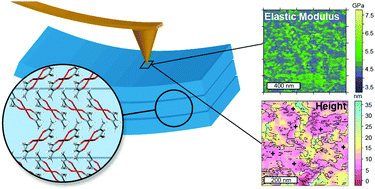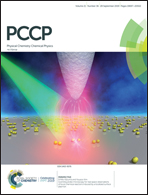Measuring the mechanical properties of flexible crystals using bi-modal atomic force microscopy†
Abstract
Flexible crystals are an emerging class of material with unique properties and a range of potential applications. Their relatively recent development means that mechanical characterisation protocols have not yet been widely established. There is a lack of quantitative flexibility measurements, such as the elastic modulus (Young's modulus), reported in the literature. In this work, we investigate amplitude modulated–frequency modulated atomic force microscopy (AM–FM AFM) as a fast, versatile method for measuring the elastic modulus of single flexible crystals. Specifically, the elastic modulus of single crystals of copper(II) acetylacetonate (Cu(acac)2) was measured. The elastic modulus for Cu(acac)2 was found to be 4.79 ± 0.16 GPa. Importantly, this technique was able to map the variation in mechanical properties over the surface of the material with nanoscale resolution, showing some degree of correlation between surface morphology and elastic modulus. Additionally, the distribution of elastic modulus values can be measured at different locations on the crystal, giving a statistically robust distribution, which cannot be achieved using other methods.



 Please wait while we load your content...
Please wait while we load your content...